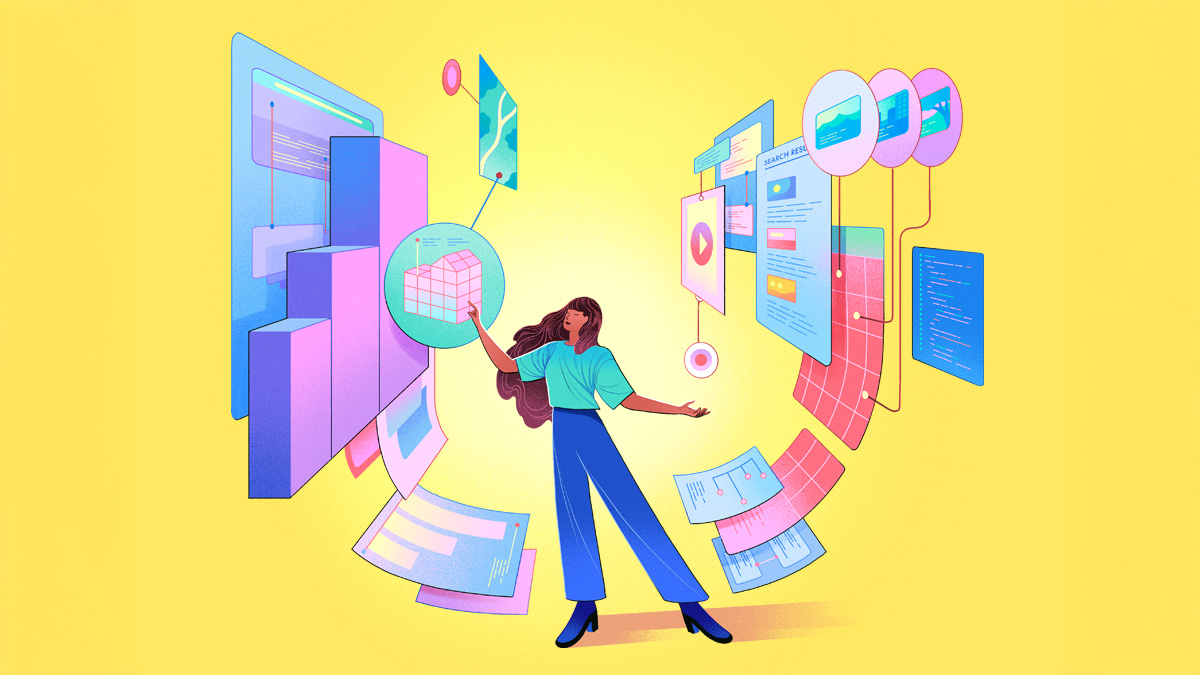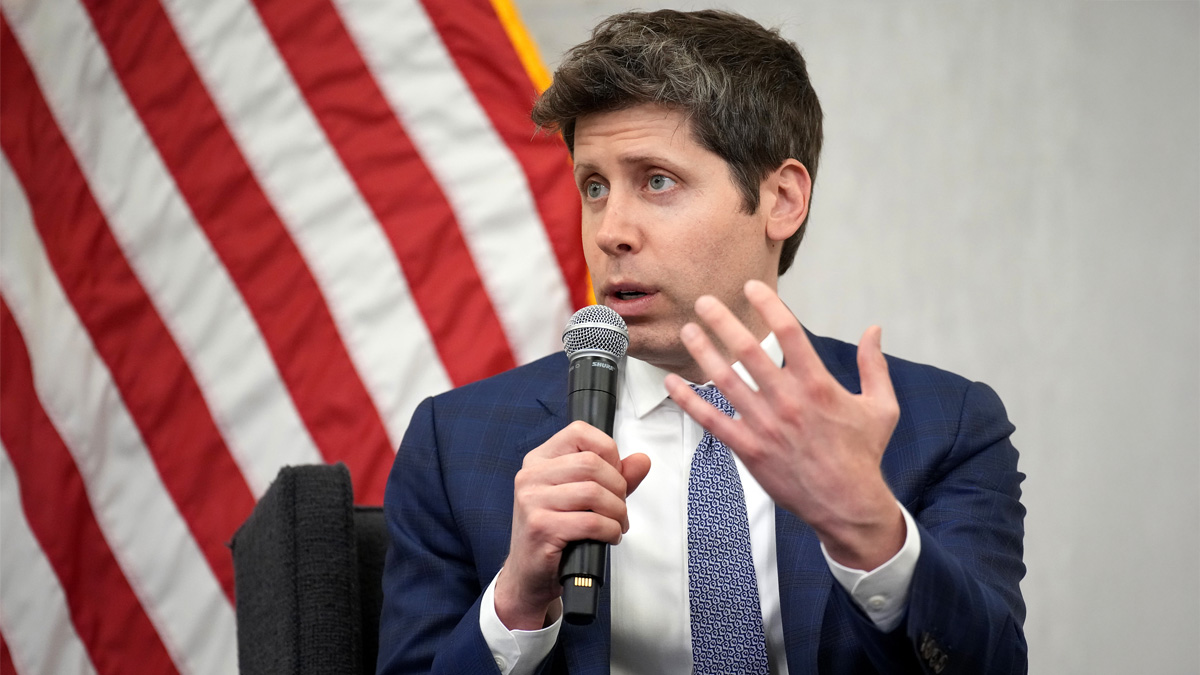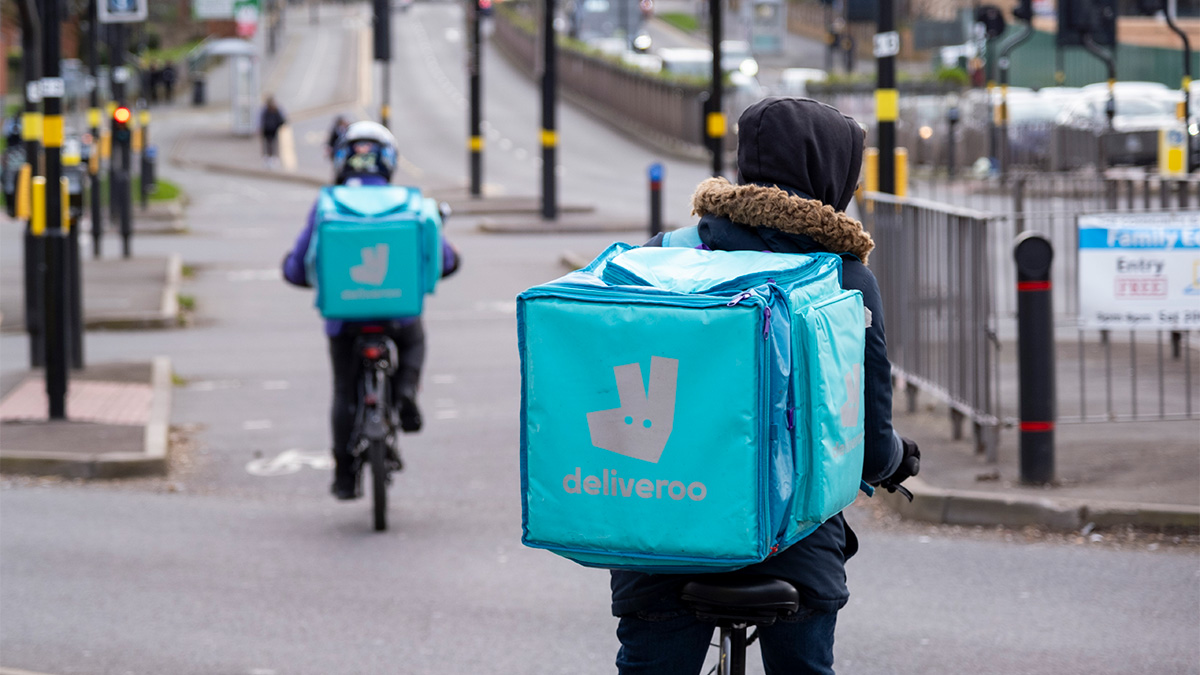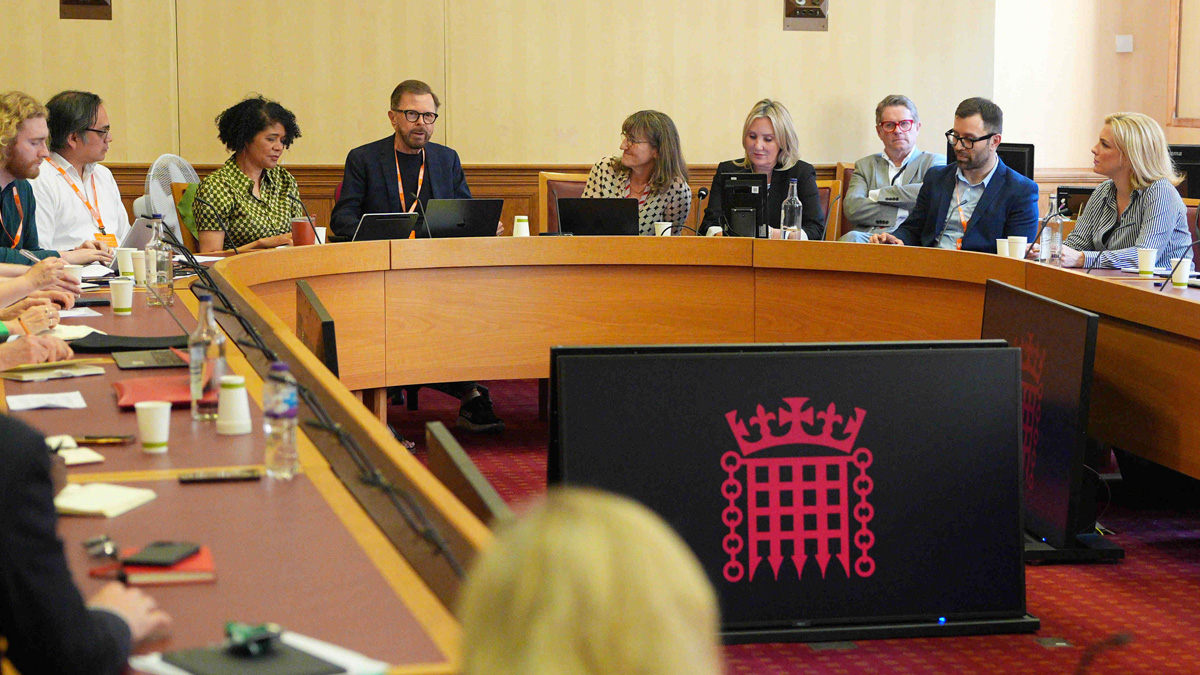
Sir John Hegarty is one of the most creative minds in the business world. He is the advertising genius behind the “Vorsprung durch Technik” commercials for Audi, the “Flat Eric” ads for Levi’s and many other classics.
He is also exactly the sort of person you would expect to be cynical about new artificial intelligence technology and what it might do to his industry. But not so. “I think of AI not as a tool, but something you should collaborate with,” Hegarty explains. “It’s going to make whatever you do better.”
Large language models (LLMs) such as OpenAI’s ChatGPT are getting more advanced on a daily basis, from summarising data to writing lines of code to creating video. They are diagnosing diseases, carrying out surgery and powering self-driving cars.
Yet despite all the talk about AI, many leaders are struggling to understand how to implement it in their business – or why they should. Integrating AI is not as simple as buying software and asking people to use it. It requires rethinking workflows, training employees and setting clear goals.
It also requires overcoming scepticism from staff who may fear being replaced, mistrust the technology or simply not understand how it can help them.
To truly benefit from AI, companies must approach it strategically, aligning the technology with human strengths and organisational objectives. They need to work with the technology.
Hegarty agrees. He now runs an agency, The Garage Soho, which invests in promising consumer brands. “You can’t have a business conversation today without somebody talking about AI,” he says.
For the founders and chief executives of fast-growing businesses, AI has the power to turn their bold ideas into reality faster than ever. But, as Hegarty explains, those ideas – the magic behind the business – will still come from the entrepreneur.
“This is fundamentally important – the one thing it can’t do is imagine,” he says. “It gets you to an interesting place, then you have to use your imagination to take it further. And that’s where the advantage lies: in the imagination.”
There is another crucial point for the business world to realise about AI. Not only can it empower founders and CEOs, but it should particularly benefit small- and medium-sized businesses over large companies.
“It democratises opportunity,” Hegarty says. “So as a medium-sized business, you now have the same advantage as a major corporation. In fact, I could argue you’re in a better place because you can use and implement it instantly, when maybe a large organisation would be slower doing it.”
However, while data shows that use of tools such as ChatGPT is growing dramatically in UK businesses, many are struggling to use it as productively as they should.

According to Boston Consulting Group (BCG), 68 per cent of employees in the UK are using AI, which is a higher rate than in the US, Germany or France (but behind India). Furthermore, 49 per cent of employees say the technology is saving them more than an hour a day. However, only two in five say they have received any guidance on how to use the time they have saved.
Separate research from BCG also finds that most companies are aiming too low by prioritising smaller-scale, productivity-focused initiatives, diluting their efforts by making too many AI bets and not seeing the benefits of their efforts because they are not upskilling the workforce.
“Companies cannot simply roll out AI tools and expect transformation,” Sylvain Duranton, co-author of the BCG report, says. “The real returns come when businesses invest in upskilling their people, redesign how work gets done and align leadership around AI strategy.”
It estimates that deploying AI in everyday tasks can lead to a 10 to 20 per cent productivity increase, while reshaping critical functions can lead to a 30 to 50 per cent boost to efficiency and effectiveness. But to maximise its potential, companies need to invent new products and services that can offer long-term competitive advantage.
The UK is one of the top five countries in the world for adopting ChatGPT, according to OpenAI, the business behind it. More than 3 million businesses globally are already paying to use ChatGPT, triple the number from a year ago.
OpenAI has built a team, led in the UK by Matt Weaver, the head of solutions engineering for Europe, the Middle East and Africa, to help businesses adopt the technology, including the newest version, GPT-5.
“We’re not great at naming things,” Weaver says of OpenAI. “ChatGPT sounds like a chatbot and when we first launched it, it absolutely was. You’d put some text in and you’d get a quick reply out. But ChatGPT is now so much more than just a chatbot.
“There’s a new buzzword around this year about agents, or agentic. Anyone who’s been on LinkedIn or read the news will find it hard to avoid these agents. But let’s just demystify that a little bit. Agents basically means that these AI tools have moved from this kind of chat interface, where you ask a question and get a response to actually being able to do work for you on your behalf.
“We’ve basically given the AI access to tools, like the ability to search the web or even search your internal knowledge sources, so we use Google Drive at OpenAI and Slack. By giving a tool like ChatGPT access to reach in and read from those sources, but also to take actions, you can delegate work, and there are a whole bunch of tasks that can be done for you.”
Weaver is quick to address potential issues about privacy or data from within a business being shared. Data and queries put into ChatGPT enterprise accounts is not accessible to Google (ie capable of being found by someone searching the web) and OpenAI does not train its tools on this data – it is run on separate infrastructure to OpenAI’s consumer tool.
“When you’re putting private and sensitive data in, that data has to remain private and secure. It is for your eyes only,” Weaver says. “We don’t train on your data. We don’t look at your data. It’s entirely private, it’s yours and it’s encrypted. We just want to make the most useful tool possible.”
Weaver provides a couple of examples of how the newest version of ChatGPT is being used. OpenAI is working with Virgin Atlantic to launch an app that will offer a personal concierge service for the airline’s customers – suggesting restaurant bookings, helping to find lost baggage and navigating airports. On a more personal note, Weaver says he has used ChatGPT to help with corporate planning – turning spreadsheets on staff and regional expansion into a one-page summary of what needs to be delivered.
He has three golden rules for businesses on how to adopt AI. The first is employee literacy – training staff and getting them up to speed: for this, OpenAI offers training courses through the OpenAI Academy. The second is executive sponsorship and leading from the front – chief executives and leaders using AI in front of employees and shouting about the benefits. The third is experimentation – trying different things every day.
“I understand, as a business leader, you can get a bit of fatigue,” Weaver adds. “I’m sure everyone’s receiving cold calls about some new AI tool that they should be using. There’s an amazing ecosystem of start-ups that have some great products. But I think AI is not something that you bolt on the side. It needs to be like a new way of thinking and a new way of working.
“To stay on the front foot and ride this exciting AI wave, you’ve got to make sure that you’re educated and that the people around you get access to the material to become great at using AI. Leaders need to lead in their use of AI, share that with those around them and encourage a healthy culture of experimentation.
“These tools are going to change quite a bit over the next couple of years. They’re already really powerful and the more you’re experimenting, the more able you’re going to be to take advantage of all the value that’s going to be created over the next couple of years.”

Deliveroo is one UK business that is working on how to adopt AI. Its co-founder and CEO Will Shu estimates Deliveroo has been running machine-learning models to optimise operations for around 12 years. But he believes generative AI offers huge opportunities.
“I think change is upon us in a big way,” he says. “I didn’t necessarily think that when the ChatGPT model came out in November 2022 [and created a big reaction]. For me, that was a seminal moment in the sense that it was really fun.
But it’s so far beyond that at this point. I think when we look at our business, we see huge opportunities to enhance productivity across every single type of role. That’s really, really exciting.”
Deliveroo is using AI to improve productivity and reshape key business functions. Shu cites the example of Glean, a tool focused on helping employees find information more effectively, which Deliveroo has adopted.
”Think about it as an inventory search and discovery platform. What does that mean? Think about every email you’ve ever written, every single Slack message you’ve ever written and every Excel spreadsheet. It’s everything that you’ve ever done,” Shu says.
“You can ask: ‘Hey, back in 2017, I was looking at this restaurant contract. Why was I looking at it like that and what are the learnings from what happened in the past?’ It will sift through everything and then summarise it for you. It’s like having a flawless memory. It’s incredible. It can help for decision-making.”
Others are also investing in AI. Thomson Reuters runs a publishing empire that covers law, tax and international news. It is investing $200m (£148m) a year on AI technology. It became obvious to the company that its industries would be transformed by AI when ChatGPT passed the bar exam for lawyers in the US in 2023.
“It looks poised to transform the legal profession and, in turn, tax, accounting and audit,” says Steve Hasker, chief executive of Thomson Reuters, which is valued on the stock market at $80bn. “Eventually, risk, fraud and compliance and law enforcement too. We’re just at the start. What we’re seeing among our customers is that many are really starting to invest and innovate. But the majority are probably still in experimentation.”
Hasker believes AI tools have the “ability to transform the way professional work is done”, with AI able to draft contracts, offer briefings and undertake research for the legal profession. In Thomson Reuters’ news business, it has developed tools that can scan thousands of press releases every day to find news stories and check facts.
“It certainly ought to increase the productivity of a journalist, but also the job satisfaction. They will get to add more judgment and more value to the story, rather than have to grind through the first draft,” he says.
Venture capital firms are prepared to pump millions of pounds into businesses building AI technology or looking to use it to their advantage.

Fergal Mullen is the co-founder of Highland Europe, one of the largest investors in promising businesses in Europe. “Companies are getting massive, massive efficiency gains through the use of AI platforms and tools to allow the workforce to do a better job and have more brain time for strategic and tactical thinking,” he says. “It’s a total game-changer. There are so many use cases for AI. It’s mind-blowing.”
However, there is disruption ahead too. Mullen is concerned about the fallout from AI in some industries, pointing to the 35 million people working in call centres around the world.
“I am worried about certain sectors from a societal standpoint – the impact AI might have on some low- to mid-income job sectors and how we replace those jobs.” There are also, as Thomson Reuters alludes to, concerns over privacy and data security, with businesses cautious about how AI systems manage their sensitive information.
“The promise that we make to our customers, which many of our competitors don’t, is that their IP will not become part of our AI output,” Hasker says. “This is the great risk with working with an AI system or tool that doesn’t respect data privacy and protection. Information about a firm or a client could be accessed by a competitor using the same tool, by asking a similar or related question. That is radioactive as far as we’re concerned.”
Ethical questions also loom. Who is accountable if an AI system makes a costly error? What do we do about transparency and bias? And how do we counter the broader societal fears about the potential displacement of jobs, especially in roles vulnerable to automation?
As businesses explore how to harness AI, one point is clear: its greatest potential lies not in replacing humans, but in amplifying their ingenuity and imagination – true breakthroughs will happen when human creativity and AI collaborate.
Leaders who strategically embrace this partnership by rethinking workflows, investing in their people and aligning AI initiatives with clear business goals will unlock the technology’s potential. As Hegarty aptly puts it, the advantages of AI will rest in the human imagination – the one resource technology cannot replicate.
Related and recommended

The prime minister and chancellor may be safe for now but Cabinet ministers believe it’s a case of when, not if, they fall

After creating her own hair oil blends as a student, Lucie Macloud grew Hair Syrup into a multi-million pound business that she’s now expanding into Europe and the US

Thea Green, one of the UK’s most successful entrepreneurs in the beauty and self-care space, shares her advice

Nick Grey's story is a tale of grit, design obsession and the strategic choices behind sustainable success

